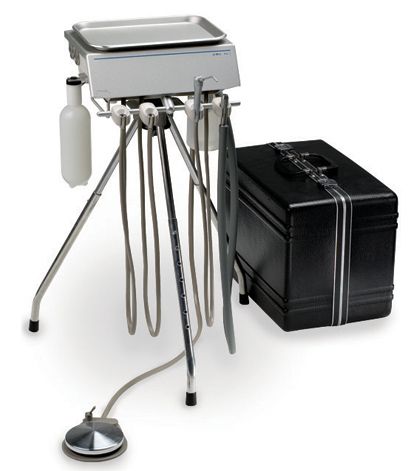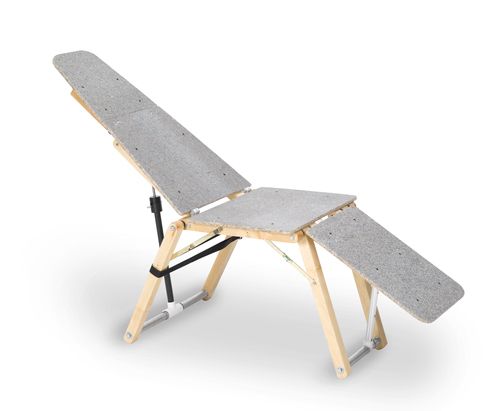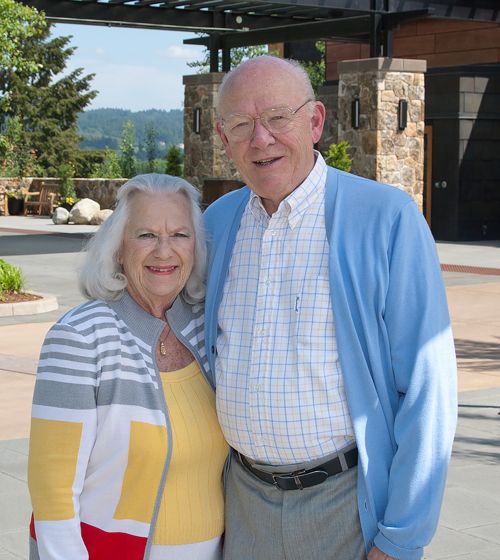A-dec’s Inventions for Field Dentistry—A Legacy of Smart Engineering
When dental professionals travel around the world to perform charitable work and treat patients with limited access to care, they typically face one very basic problem: How can they set up a reliable dental unit and chair in a location that may not even have running water or electricity? This was one of the problems that A-dec founder Ken Austin set out to solve almost 50 years ago when he was a young member of his community’s Rotary club.
When dental professionals travel around the world to perform charitable work and treat patients with limited access to care, they typically face one very basic problem: How can they set up a reliable dental unit and chair in a location that may not even have running water or electricity? This was one of the problems that A-dec founder Ken Austin set out to solve almost 50 years ago when he was a young member of his community’s Rotary club.
Related Article: The gift of cosmetic dentistry: A smile means so much for New York teenager
Not long after joining the club, Austin was approached by an area dental dealer who was trying to help a dentist make a charitable donation of old equipment. In considering the logistics of how to transport the obsolete equipment and run it in a faraway setting, Austin soon realized that it would be extremely difficult to keep in good repair.

Young boy in Nepal learning to properly brush teeth.
But the wheels began turning. Austin determined that instead of sending old equipment, his Rotary club could provide engineering samples and prototypes of A-dec’s dental units to dentists practicing in remote field locations. These units were more up-to-date and could be kept in good condition more easily. However, demand for the units outstripped supply very quickly.
Click here to read about Austin's solution.
Engineering a Solution
That was when Austin decided that a more permanent solution was needed. “I decided to build a special unit for the Rotary that was very simple and inexpensive and then donate it to missionary dentists around the world,” he said.
Trending article: Announcing Dental Products Report's Top 25 Women in Dentistry for 2014
Thus, the Rota-Dent was born. The concept has been refined over the decades, but the simple engineering of these units has made them a success from the start. Rota-Dent portable dental units operate on compressed air, and are otherwise fully self-contained. They include a water system for rinsing the mouth and cooling handpieces, a 3-way syringe, high- and low-speed handpieces, and a self-contained suction system, all in a single case that weighs less than 40 pounds and can be checked as luggage as dentists travel to their destinations. “Today, if dentists have a unit shipped to a destination, they know that everything they’re going to need except for the consumables will be right there,” said Austin.

The Rota-Dent is a portable dental unit that operates on compressed air and is otherwise fully-self contained
The Rota-Dent’s inclusion of W&H handpieces can also be traced to a Rotary club connection. In 1970, Austin was at a dental show in Europe when he struck up a conversation with W&H owner Peter Malata. “I was wearing my Rotary pin and Mr. Malata was wearing his, and we started talking about Rotary,” Austin said. “We became business partners maybe because of two Rotary pins! That led to them wanting to contribute worldwide on this project just like we were.” W & H currently donates 200 handpieces annually.
Over the years, the Rota-Dent has proven itself in countless missions and remote locations. “We’ve received hundreds of letters from doctors saying how simple the product is and how wonderful it is to have new equipment to use out in the field,” said Austin.
Today, A-dec builds and donates approximately 100 Rota-Dent units annually, with additional units provided below A-dec’s cost, as a way of supporting the Rotary effort and realizing the company’s vision of supporting the betterment of dentistry worldwide. Through the years, A-dec has manufactured and donated over 2,300 Rota-Dent units, supporting mission dentistry throughout the world.
Click here to read about the other challenges Austin helped to overcome.
The Next Challenge: A Proper Chair
In more recent years, Austin has turned his engineering skills to another problem that dentists face in remote locations: lack of dental chairs. Without a dental chair, dentists must perform work on patients lying on cots or reclining in regular chairs, which is uncomfortable for both parties. The lack of ability to properly position patients can impede the dentist’s access to areas of the mouth and can cause pain from poor ergonomics.
Free E-Book: 7 ways to avoid work-related pain and extend your career

The TotaChair is a lightweight, easy-to-use dental chair that was designed for military use.
After hearing about this issue, Austin worked to adapt an existing portable A-dec chair that was designed for military use. The result is the TotaChair, a lightweight “tote-able” dental chair that can be set up in two minutes and costs just $400. Austin designed the TotaChair to be made with readily available and cost-effective building materials, and to use simple parts and machinery so that it could be made and assembled by members of the Rotary club.

Three young girls in who received dental care because of A-dec inventions.
“It’s the smallest compact chair that’s ever been built,” he said. “It weighs 25 pounds, and it’s small enough to fold up to put in a backseat, in the baggage compartment of a small plane, or on the back of an animal. And it’s an incredible project for the Rotary club because it has us working together on weekends and it brings a real camaraderie to our club members.”
Click here to read about Austin's vision of continued service.
A Foundation for Tomorrow
To ensure that the TotaChair continues benefiting patients around the world for many years to come, Austin donated the design and the equipment required to manufacture the chair, to the Rotary club. He explained that his work on the project has been a boon to him in his retirement. “It’s one of my prized gifts because I was able to keep my creativity intact,” he said. “I was the chief designer for all the dental products at A-dec for the first 35 years, so when I stepped away from the engineering part of it I was kind of lost. So figuring out how we could make this with simple procedures, simple materials, and ordinary people was just a lot of fun.”
On-Demand Webinar: Easy Ways to Boost Your Practice's Image
While the Rota-Dent and TotaChair are put to use around the world, A-dec’s home community in Oregon is seeing benefits as well. The proceeds from both products are reinvested by the Rotary club in projects such as scholarships and civic improvements.

Photo of Ken Austin, founder of A-dec, and his wife Joan.
“My wife Joan and I didn’t have anything when we started the company,” said Austin. “I think it’s part of the American dream when you’re able to make things and share them with others who are less fortunate. It’s very rewarding, and the culture of giving has been part of the company since it started.”
Product Bites – November 10, 2023
November 10th 2023The weekly new products podcast from Dental Products Report is back. With a quick look at all of the newest dental product launches, Product Bites makes sure you don't miss the next innovation for your practice. This week's Product Bites podcast features new launches from Amann Girrbach, DMG, Pac-Dent, and ASI Dental Specialties. [4 Minutes]